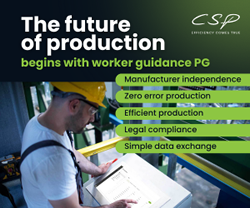FastRack510 Installed at Hawaii's Largest Airports
24M Introduces the Semisolid Lithium-Ion Battery
Maximizing the Benefits of Roof-Mounted Solar Arrays for Commercial Buildings
Trina Solar to Invest $500 Million in India-Based Solar Plant
Case Study: City Wastewater Treatment Plant, Pocomoke City, MD
Nissan to incorporate used Leaf batteries in home energy storage system
Is Climate Change a Reality?
Designer Carbons Are Getting a Boost from Nanotechnology
Why You Should Be Paying Attention To The 'Other' Form Of Solar Power
Top 10 Sustainable Cities and their Efforts in the Renewable Energy Sector
Renewables share of U.S. energy consumption highest since 1930s
Study: U.S. could run entirely on renewable energy by 2050
The Role of Data Analytics in Accelerating the Adoption of Solar
Mercedes-Benz To Follow Tesla With Its Own Home Batteries
Five lessons on how to sell home energy storage
Records 1651 to 1665 of 1817
First | Previous | Next | Last
Other Renewables - Featured Product

